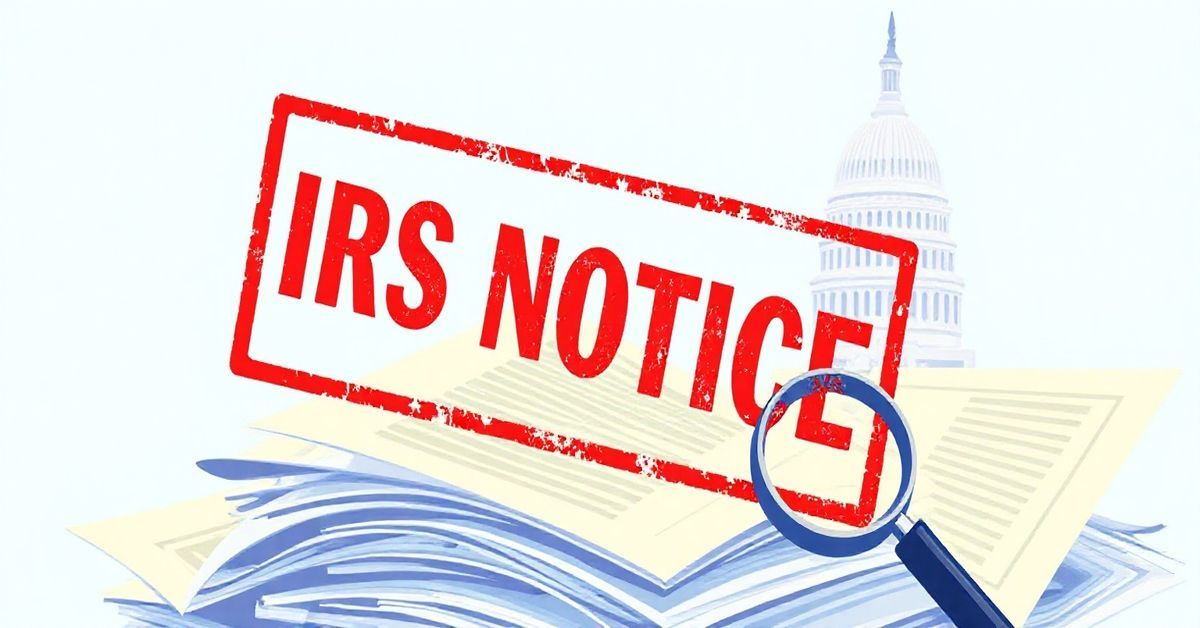Understanding the IRS Letter 3219C: Statutory Notice of Deficiency
The IRS isn’t exactly known for its simple, easy-to-understand communications, right? One letter that can cause a lot of stress is the IRS Letter 3219C, which is formally called a “Statutory Notice of Deficiency.” Basically, the IRS is saying they’ve reviewed your tax return and believe you owe more money than you originally stated. This can sound scary, but it’s important to understand what this letter means, what your rights are, and how you should respond. Let’s break it all down.
What Does “Statutory Notice of Deficiency” Actually Mean?
Let’s get real for a second. The term “Statutory Notice of Deficiency” is a mouthful! It sounds complicated, but the idea behind it is straightforward. “Statutory” simply means it’s required by law; the IRS has to send you this letter in certain circumstances. “Deficiency” refers to the additional tax the IRS believes you owe. So, the letter means the IRS thinks you’re short on taxes and is following legal procedures to notify you. This letter isn’t just a suggestion; it’s a formal step the IRS takes before it can try to collect the additional taxes.
Why Did I Receive a Letter 3219C?
There are several reasons why the IRS might send you a Letter 3219C. Here are some of the most common:
- Underreported Income: The IRS may have discovered income you didn’t report on your tax return. This could be from self-employment, investments, or other sources. Maybe a payer sent the IRS a 1099, but you forgot to include that income on your return.
- Disallowed Deductions or Credits: The IRS might not agree with some deductions or tax credits you claimed. This could be due to incorrect information, or simply different interpretations of the tax rules.
- Math Errors: While less common, sometimes the IRS finds an error in your calculations that affects the amount of tax due.
- Incorrect Filing Status: Sometimes, the filing status you claimed may not match what the IRS determines to be true.
- Audit Findings: This letter usually comes after an audit where the IRS found discrepancies on your taxes. This usually is preceded by other letters where the IRS requests information.
Basically, any time the IRS thinks you didn’t pay the full amount of taxes you should have, and you disagree, they might send this letter to officially start the process of trying to collect the additional tax.
The Crucial 90-Day (or 150-Day) Deadline
This is where the Statutory Notice of Deficiency becomes very serious. The IRS isn’t just sending this letter to keep you informed. You have exactly 90 days (or 150 days if you’re outside of the U.S.) from the date on the letter to do one of two things:
- File a Petition with the U.S. Tax Court: If you disagree with the IRS’s assessment, you can file a petition to have your case reviewed by the Tax Court. This is your chance to dispute their findings and present your side of the story.
- Do Nothing and Wait: If you do nothing during that 90-day (or 150-day) period, the IRS can then start to collect the additional taxes they believe you owe. They could garnish your wages, take funds from your bank accounts, or place a lien on your property to collect the debt. This also means you lose your chance to have a fair hearing in the Tax Court without having to pay the tax first.
That deadline is set in stone, and the IRS is extremely strict about it. Missing that deadline has serious consequences, so it’s important to act quickly.
What to Do When You Receive a Letter 3219C: A Step-by-Step Guide
Okay, so you got the dreaded Letter 3219C. Don’t panic! Here’s a step-by-step approach:
- Don’t Ignore it!: The biggest mistake you can make is to ignore the letter. This is not like other IRS correspondence, which you may have time to respond to. The 90-day deadline is real, and ignoring it could hurt you.
- Read the Letter Carefully: Make sure you understand what the IRS is saying, how much additional tax they think you owe, and for what tax year. Note the due date at the top of the letter.
3 Gather Your Documents: Collect all documents related to the tax year in question. This might include your original tax return, W-2s, 1099s, receipts for deductions, and any other relevant information. Having your paperwork organized will help you better understand the IRS’s findings, and assist in preparing a tax court petition. - Evaluate Your Options:
- Do you agree with the IRS? If you believe the IRS is correct, you can pay the additional taxes. You may want to pay as soon as possible to reduce any interest and penalties that are being added.
- Do you disagree with the IRS? If you think the IRS made a mistake, you may wish to petition the tax court.
- Consider Professional Help: If the issues are complex or you are unsure of how to proceed, it’s a good idea to consult a qualified tax professional. They can assess your situation, help you understand your options, and assist you in preparing your Tax Court petition if necessary. A tax professional can help you determine if you should try to dispute the taxes or pay it to stop the interest and penalties from increasing.
- File a Petition with the Tax Court (If Necessary): If you decide to challenge the IRS’s assessment, you’ll need to file a petition with the U.S. Tax Court within the 90-day or 150-day deadline. A tax professional can help with this process, as it can be complicated. The petition will have to include a clear explanation of why you disagree with the IRS and include copies of your documentation.
What Happens If You Don’t File a Petition in Time?
If you miss the 90-day (or 150-day) deadline, you lose your right to challenge the IRS in Tax Court. The IRS can then proceed to collect the additional taxes they believe you owe, plus interest and penalties. They can do this through wage garnishments, bank levies, and liens. Avoiding that situation is one of the most important reasons to take this letter seriously.
Why Is This Important?
A Letter 3219C is not just another piece of IRS mail. It’s a critical notice that can significantly impact your finances. It’s crucial to respond promptly to protect your rights and prevent the IRS from taking collection actions.
Key Takeaways
- Letter 3219C = Statutory Notice of Deficiency: The IRS says you owe more taxes, and is the last stop before the IRS may take collection actions, such as garnishment or seizure.
- 90-Day or 150-Day Deadline: Act quickly to protect your rights.
- Options: You can pay or file a petition to the U.S. Tax Court.
- Seek Professional Help: If needed, don’t hesitate to consult a tax professional.
- Don’t Ignore It: Ignoring this notice is not a good idea, and will not make the problem go away.
Remember, the IRS isn’t always right, and you have the right to challenge their findings if you disagree. Understanding what a Letter 3219C means and how to respond is essential for protecting your financial interests.

